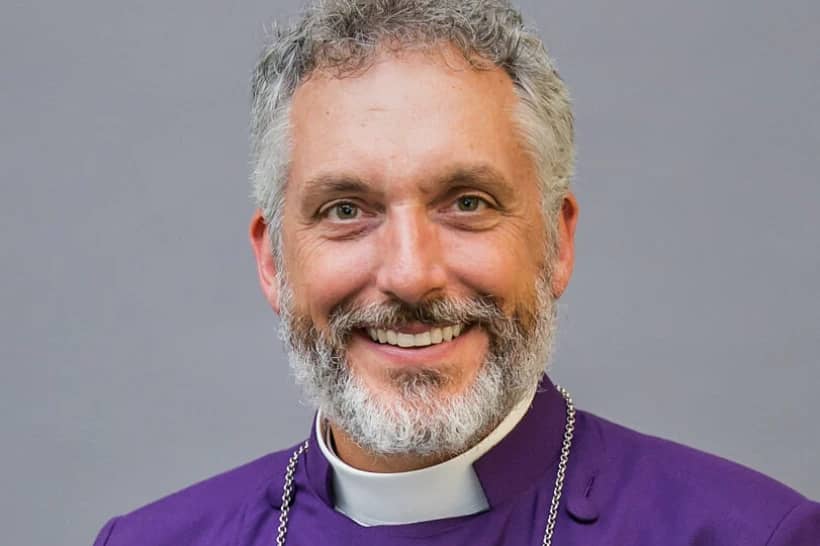NEW YORK – When Bishop Mark Seitz got the news that the federal government will soon terminate Title 42, a controversial border policy, he said he began “thanking God.”
Seitz, along with other immigration advocates, have been outspoken about the cruelty of the policy since its implementation in March 2020. Now, they applaud its pending termination, while simultaneously recognizing the challenges ahead with an expected influx of migrants at the U.S.-Mexico border.
Title 42 is a border policy implemented by the Trump administration and continued by the Biden administration that allows the immediate expulsion of migrants and limiting their legal right to seek asylum. It was enacted as a public health measure to mitigate the spread of COVID-19.
Its official termination date is May 23, the Center for Disease Control announced on April 1. A total of about 1.7 million migrants have been expelled by Title 42 in two years, a figure that includes repeat crossers, according to U.S. Customs and Border Protection (CBP) data.
“I think the way people need to understand what to expect is that there is a great deal of pent-up need,” Seitz, the bishop of El Paso and incoming U.S. Bishops’ Conference Migration Chair told Crux. “It’s like we’ve pinched the hose and the pressure has built up so people who were living under tremendous difficult circumstances, under violence and extortion and threats to their children have been waiting for some opportunity to come to the United States and others have arrived in northern Mexico at the border and been stuck there.”
“So really our policies, and particularly Title 42, have created a situation in which that pressure is likely to be released all at once,” Seitz continued. “At a certain point that need that is being felt in many countries south of the border especially is going to have to be let out.”
Father Pat Murphy, director of Casa del Migrante Tijuana, a non-profit group that assists migrants in Tijuana, Mexico, told Crux that “it’s about time” migrants have the opportunity to present themselves for asylum. Although, he cautions an influx of migrants is certain.
“A big influx will happen and in fact a new caravan is leaving Tapachula today,” Murphy said. “This is also Holy Week vacation, and many will come north to try their luck. Coyotes and smugglers will be on the prowl and many people will be taken advantage of during this time.”
The number of U.S.-Mexico border encounters by the CBP were about 165,000 in February – up about 10,000 from January, but about 15,000 less than December, according to CBP data. There have been almost one million CBP encounters so far in Fiscal Year 2022 that started in October.
In an April 1 news release, the CDC cited low COVID-19 levels in more than 95 percent of U.S. counties, and an increased availability of tools to fight the virus.
Alejandro Mayorkas, the Secretary of Homeland Security, said in an April 1 statement that in anticipation of the policy’s termination the federal government will increase capacity to process new arrivals, evaluate asylum requests, and quickly remove those who do not qualify for protection. Mayorkas said they’ve also deployed more than 600 law enforcement officers to the border and will increase personnel as needed, refer smugglers and certain border crossers for prosecution, and implement additional COVID-19 protocols including a vaccination program.
“Let me be clear: Those unable to establish a legal basis to remain in the United States will be removed,” Mayorkas said, adding that the federal government will work with other countries to offer safe and legal pathways for migrants seeking protection or resettlement, addressing root causes, and taking action against smuggling networks.
The Republican National Committee came out against the Biden administration’s decision in an April 1 statement, saying the “policy change will actively worsen the historic border crisis that is endangering our communities.”
On April 4, Missouri, Arizona, and Louisiana – three Republican-led states – sued the Biden administration over the decision. In the lawsuit they argue the “unlawful termination of the Title 42 policy will induce a significant increase of illegal immigration into the United States with many migrants asserting non-meritorious asylum claims.”
Seitz acknowledged that the immediate influx of migrants that will take place once Title 42 is terminated “will be greater than anything we’ve seen to this point,” but pushed back against the notion that terminating Title 42 and restoring the asylum process will create a long-term border crisis.
“I think a lot of people say that if we facilitate [migrants] coming and doing it legally then everybody will come. No, everybody will not come,” Seitz said. “Guess what: They love their home country. The one thing that assures them coming is if we allow the order and the violence in their home countries to continue without trying to do something about it, and to do it in cooperation with them, not taking over.”
“Not everybody’s going to come,” he continued. “It’s going to seem like a lot of people are coming at once because they haven’t had the opportunity to do so for two years.”
Seitz added that no matter what the situation looks like faith organizations at the border will step up to meet the need “because this is what we do,” noting, however, that “immigration is a federal responsibility” and the government needs to step up.
“We’ve felt for a long time that the federal government should be doing more not only to process those who are making a claim of asylum, but also to help them in their movement when they come,” Seitz said. “It has fallen to volunteer groups to do most of that work and without any direct aid from the federal government, at least very little.”
Other immigration advocates also called on the federal government to step up.
Anna Gallagher, executive director of the Catholic Legal Immigration Network, urged the Biden administration “to make a full and unequivocal commitment to rebuild an asylum system that welcomes all people with dignity.”
Dylan Corbett, executive director of the El Paso-based Hope Border Institute, noted in a statement that “with strong collaboration and support from the administration, we can safely and humanely receive those seeking asylum.”
Murphy highlighted the need for the U.S. and Mexico to work together, as well.
“It is essential that the two governments work together to come up with a comprehensive plan to care for the people,” Murphy said. “They will also need to work with and support the civil associations in Mexico who offer shelter to migrants. We all need to work together for the thousands who will arrive at the border.”
Follow John Lavenburg on Twitter: @johnlavenburg












